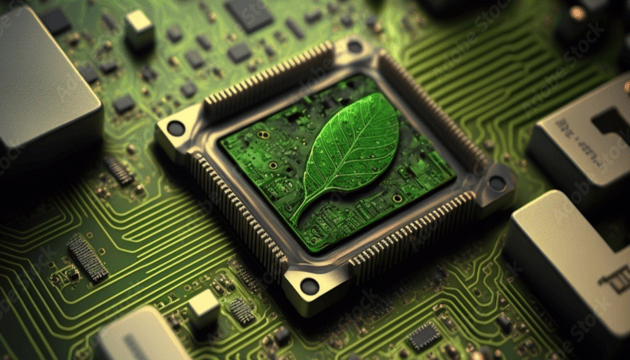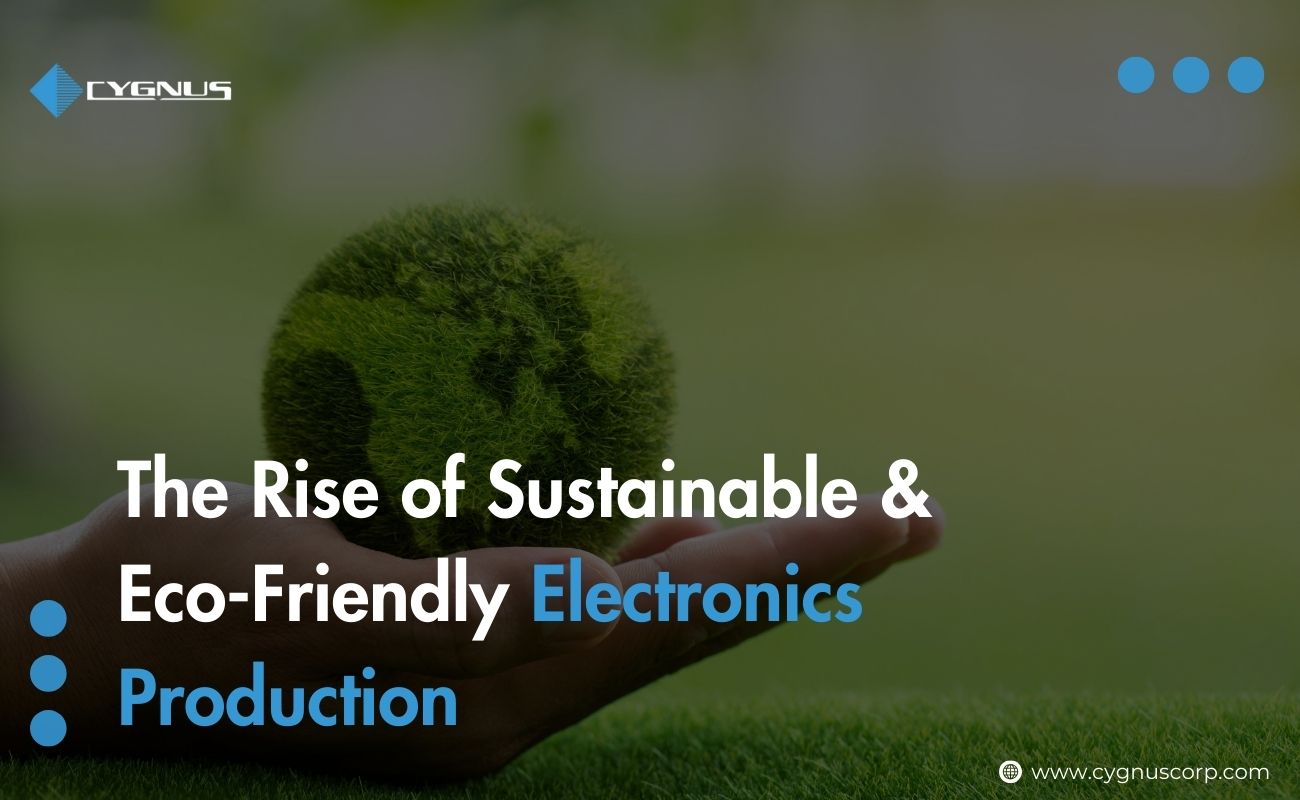The electronics industry is undergoing a major transformation, shifting from wasteful practices to a greener, more responsible future. With e-waste reaching over 50 million metric tons annually and only 17.4% of it being properly recycled, the need for eco-friendly electronics production has never been more urgent.
Big tech companies are stepping up, Apple, for example, aims to be carbon neutral across its supply chain by 2030, while Dell has pledged to use 50% recycled or renewable materials in its products by 2030. The push for sustainable electronic manufacturing is gaining momentum, but what’s driving this change, and how are brands making it happen? Let’s explore the innovations, challenges, and future of green electronics.
Environmental Impact of Traditional Electronics Production:
The electronics industry plays a crucial role in modern life, but its environmental impact is massive. From high energy consumption to hazardous waste, traditional manufacturing practices contribute significantly to pollution and resource depletion. Understanding these issues is key to driving change toward eco-friendly electronics production.
High Carbon Footprint from Manufacturing Processes:
Electronics manufacturing is one of the most energy-intensive industries. The production of semiconductors alone is responsible for nearly 300 million tons of CO₂ emissions annually, contributing heavily to climate change. A single smartphone generates approximately 85 kg (187 lbs) of CO₂ emissions during its lifecycle, with 80% of those emissions occurring during manufacturing. The demand for raw materials like lithium, cobalt, and rare earth metals further increases carbon output due to mining and refining processes. Switching to sustainable electronic manufacturing methods, such as using renewable energy and optimizing supply chains, can significantly reduce this footprint.
E-Waste Crisis: The Problem with Discarded Electronics:
Electronic waste (e-waste) is a growing global crisis. In 2022, the world generated over 50 million metric tons of e-waste, yet only 17.4% was properly recycled. The remaining waste ends up in landfills or incinerators, releasing toxic substances into the environment. By 2030, e-waste is expected to reach 75 million metric tons, making it the fastest-growing waste stream globally. Promoting repairability, recycling, and modular designs is essential to improving sustainability in electronics and reducing waste.

Hazardous Materials Used in Conventional Electronics:
Traditional electronics contain harmful substances like:
- Lead (found in soldering materials) – Causes neurological damage and is highly toxic.
- Mercury (used in LCD screens and batteries) – Contaminates water sources and poses serious health risks.
- Brominated Flame Retardants (BFRs) (found in circuit boards and casings) – Persist in the environment and are linked to hormonal disruptions.
These toxic materials not only harm ecosystems but also pose health risks to workers and consumers. Companies shifting toward eco-friendly electronics production are replacing hazardous components with safer alternatives, such as lead-free soldering and biodegradable circuit boards.
Key Innovations Driving Sustainable Electronics Manufacturing:
- Use of recycled metals, biodegradable plastics, and lead-free soldering materials is driving eco-friendly electronics production, reducing waste and minimizing environmental harm.
- Renewable energy sources and optimized production processes in factories are key to sustainable electronic manufacturing, cutting down on carbon emissions and operational costs.
- Modular, repairable, and upgradeable designs are helping extend product lifespans, reducing e-waste, and promoting sustainability in electronics.
- Advanced recycling technologies, like hydrometallurgical processes, are enabling the recovery of valuable metals, supporting a circular economy and closing the loop in electronics production.
- Adoption of low-impact manufacturing methods like 3D printing helps reduce waste while improving product precision and efficiency, demonstrating how to make electronics more sustainable.
Leading Companies & Brands Championing Sustainability:
- Cygnus Corp: Cygnus Corp is a leader in sustainable electronic manufacturing in Canada, focused on reducing waste and energy consumption throughout their production processes. They specialize in eco-friendly materials and energy-efficient manufacturing solutions.
- General Electric Canada: GE Canada has been integrating sustainable practices in their electronics production, including the use of renewable energy in their factories and reducing the carbon footprint of their products.
- Sierra Wireless: Sierra Wireless is committed to sustainability in electronics by designing energy-efficient devices, focusing on reducing e-waste, and ensuring that their products are recyclable at the end of their lifecycle.
- Blackberry: Blackberry has embraced eco-friendly electronics production by utilizing recycled materials in its products and adopting circular economy principles to promote product longevity and responsible recycling.

Challenges in Achieving Fully Sustainable Electronics:
- High costs of sourcing eco-friendly materials and implementing energy-efficient technologies can hinder the widespread adoption of eco-friendly electronics production.
- The complexity of supply chains and the availability of sustainable raw materials often make sustainable electronic manufacturing difficult to scale globally.
- Consumer demand for low-cost electronics often conflicts with sustainable production practices, challenging brands to find a balance between affordability and sustainability in electronics.
- Designing products that are both durable and biodegradable without compromising performance is a major challenge in how to make electronics more sustainable.
- Lack of infrastructure for recycling and refurbishing old electronics can delay the circular economy’s full potential in the electronics industry.
Conclusion:
In conclusion, the shift towards sustainable electronic manufacturing is essential for a greener future. As the demand for eco-friendly electronics grows, companies like Cygnus Corp and others are leading the way with innovations that reduce waste, conserve resources, and lower carbon footprints. However, challenges such as high costs and limited recycling infrastructure remain. By adopting sustainable practices, both manufacturers and consumers can play a vital role in creating a more sustainable electronics industry for the future.
FAQs
Sustainability in electronics production is crucial to reduce e-waste, lower carbon footprints, and conserve resources, ensuring the industry’s long-term viability without harming the planet.
Sustainable materials in electronics include recycled metals, biodegradable plastics, lead-free soldering, and conflict-free minerals, which reduce environmental impact and promote circular economy practices.
Companies like Cygnus Corp, General Electric Canada, Sierra Wireless, and Blackberry are leading the charge in sustainable electronic manufacturing, adopting eco-friendly materials and energy-efficient production processes.
Consumers can support sustainable electronics by opting for eco-friendly products, recycling old devices, and choosing brands committed to sustainability and responsible manufacturing practices.




